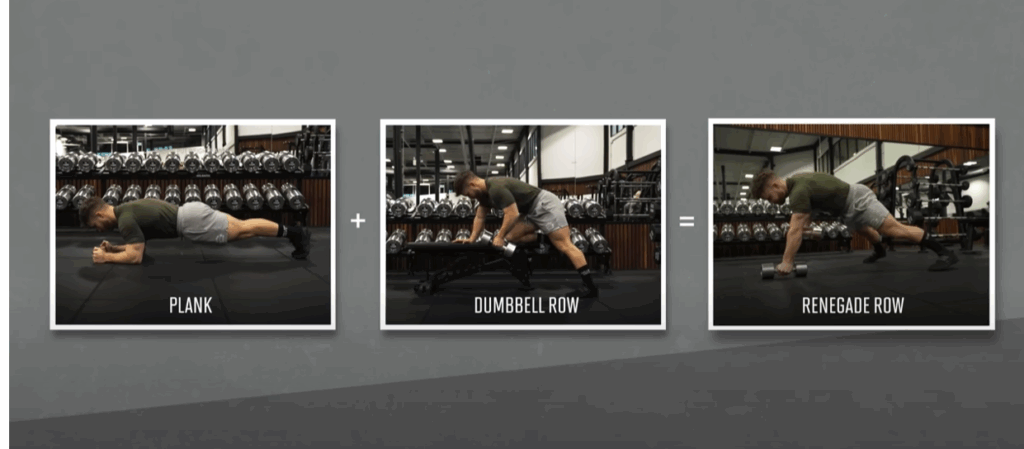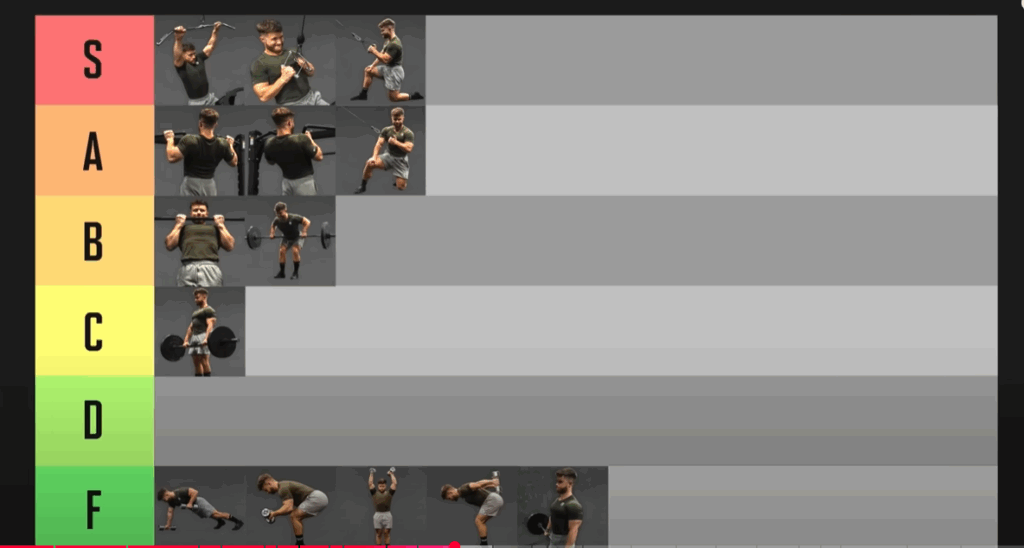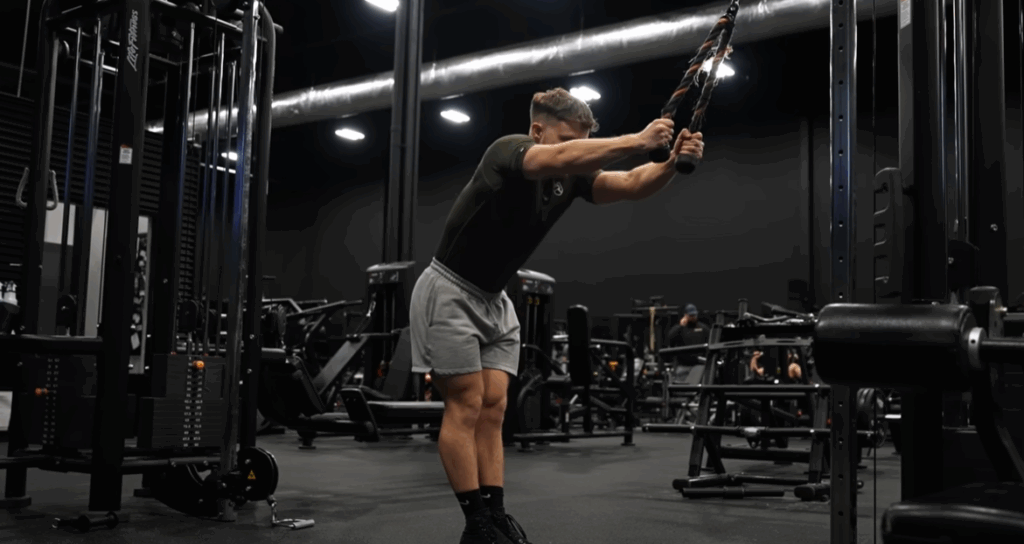When it comes to building a strong, thick, and well-defined back, choosing the right exercises is essential. With dozens of popular back movements out there, it can be hard to know which ones are truly effective for hypertrophy and which ones simply waste your time and energy. In this guide, we’ll take a deep dive into 20 common back exercises—evaluating them for their ability to build muscle efficiently.
To determine the effectiveness of each movement, we used three critical criteria:
- Muscle Stretch and Tension: The exercise should put the lats, traps, or rhomboids under significant stretch and mechanical tension throughout the range of motion.
- Comfort and Connection: Exercises should feel smooth, avoid joint pain, and help you connect with the targeted muscles.
- Progressive Overload Potential: Movements must allow for easy increases in reps or load over time.
Let’s break down the worst and the best.

Exercises That Fail for Back Gains
Renegade Rows
These may look flashy, but they do very little for building actual back mass. Balancing in a plank position limits your ability to pull heavy or control the negative properly. Most of your energy goes into core stabilization—not rowing. For back hypertrophy, this movement lacks both tension and stability. Verdict: Avoid.
Combo Moves (e.g., Row-to-Curl, Row-to-Press)
Trying to combine movements often compromises tension on larger muscle groups. With combination exercises, the smaller muscle group usually gives out first, cutting your set short before your back has been fully taxed. Good for calorie burn, not for muscle growth. Verdict: Skip.
Rack Pulls
Although they look intense, rack pulls often miss the mark for lat or upper back development. They’re more about spinal erector and trap overload—and often cause more gym annoyance than gains due to noisy setup and equipment hoarding. Verdict: Not worth it.
Overrated but Not Useless
Deadlifts
A staple for total body power, but not the most efficient for back size. While they train the spinal erectors, they don’t offer enough dynamic range of motion for the lats or traps. They’re great for strength and posterior chain thickness, but not ideal if your primary goal is hypertrophy. Verdict: Useful, but not optimal.
Chin-Ups (Underhand Grip)
While still effective, this variation shifts some of the back load to the biceps, slightly reducing lat and trap involvement. Good for upper body balance, but not the top-tier option for isolating your back. Verdict: Solid, not spectacular.
Standard Barbell Rows
Traditional barbell rows offer decent stretch and load, but can be difficult to stabilize. You often end up using your glutes, hamstrings, and lower back just to maintain position, decreasing the focus on the actual pulling muscles. Verdict: B-level builder.

Strong Performers That Deserve a Spot
Wide-Grip Pull-Ups
These classics are great for lat width and upper back development. They provide a deep stretch at the bottom and can be overloaded with body weight or added resistance. They do get tough at the top range, and not everyone can perform enough reps to train effectively, but they’re still an excellent compound movement. Verdict: Highly effective.
Dumbbell Rows
Performed with proper form, dumbbell rows are a dependable lat-building tool. They allow for unilateral work, which helps balance out strength discrepancies. Once you’re strong enough, however, dumbbells may become too light or too bulky to manage comfortably. Verdict: Reliable choice.
Meadows Rows
Named after bodybuilding legend John Meadows, this landmine variation places a unique load on the mid-back. By bracing against your knee, you minimize unwanted body movement and channel tension where it matters most. Verdict: Excellent for back thickness.
Cable Lat Pullovers (a.k.a. Lat Prayers)
This isolation movement allows you to stretch and contract your lats without involving your arms too much. It’s a great finisher or accessory move when you want to increase lat volume without stressing joints. Verdict: Underrated gem.
Modified Face Pulls (Seated or Lying)
When done with support to reduce momentum, face pulls can target the mid-back and rear delts with precision. They’re especially helpful for improving posture and shoulder health. Verdict: Include regularly.
Top Tier: The Elite Back Builders
Lat Pulldown Variations (Wide & Neutral Grip)
These machine-based moves provide stability, consistency, and targeted overload. They’re especially useful for beginners and advanced lifters alike. You can isolate the lats or mid traps depending on your grip, and the adjustable weight stack allows for smooth progression. Verdict: Muscle-building staples.
One-Arm Kneeling Cable Pulldown
This movement is ideal for isolating each lat, preventing muscular imbalances. The kneeling position, combined with the cable’s resistance profile, keeps constant tension on the muscle. While slightly less stable than machines, the payoff in mind-muscle connection is worth it. Verdict: Top-tier unilateral option.
Cable Rows (Close & Wide Grip)
Few exercises provide the stretch and control that cable rows do. By adjusting your torso angle and grip, you can emphasize either the lats or the mid-back. When done with good form, cable rows provide a fantastic pump and consistent overload. Verdict: Unmatched versatility.
Chest-Supported Rows
If you want to remove momentum and focus purely on pulling power, this is the move for you. These variations, whether done on a machine or incline bench with dumbbells, eliminate lower back strain and direct the load entirely to your back muscles. Verdict: #1 for hypertrophy.

🏁 Final Verdict: Best and Worst Back Exercises
Best Overall Back Exercise:
Chest-Supported Row
This exercise checks every box—tension, feel, progression, and safety. It’s ideal for beginners looking to build size or advanced lifters chasing refinement.
Worst Back Exercise:
Renegade Row
While it might engage your core, it fails to target the back muscles with enough tension or stability for meaningful growth.
Conclusion
Back development requires strategic planning—not just heavy weights and intensity. By prioritizing exercises that stretch, activate, and allow for progressive overload, you’ll get the most return for your time in the gym. Whether your goal is width, thickness, or both, the exercises in the S and A tiers should form the backbone of your training program.
Keep training smart—and let your back gains do the talking.



